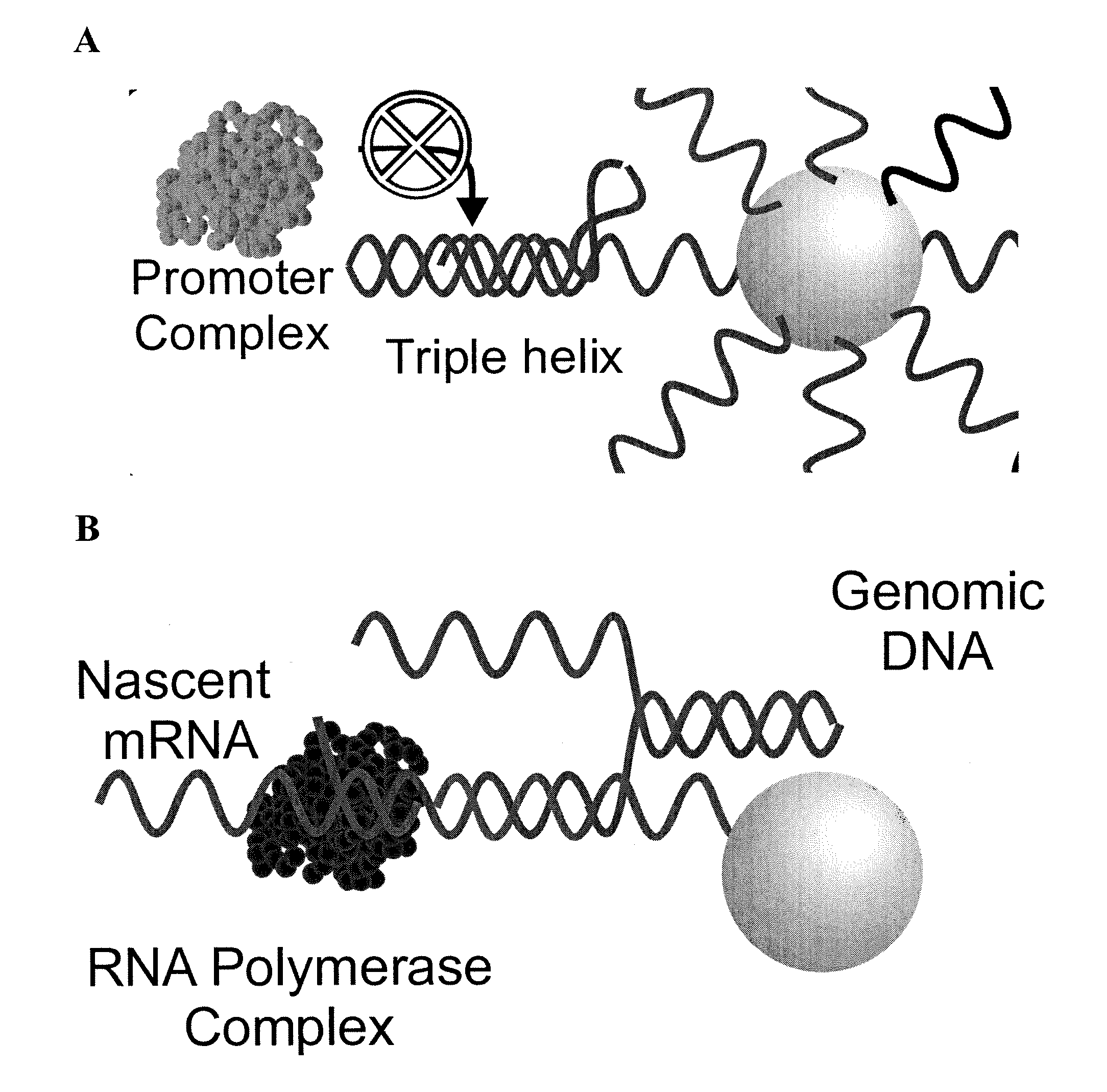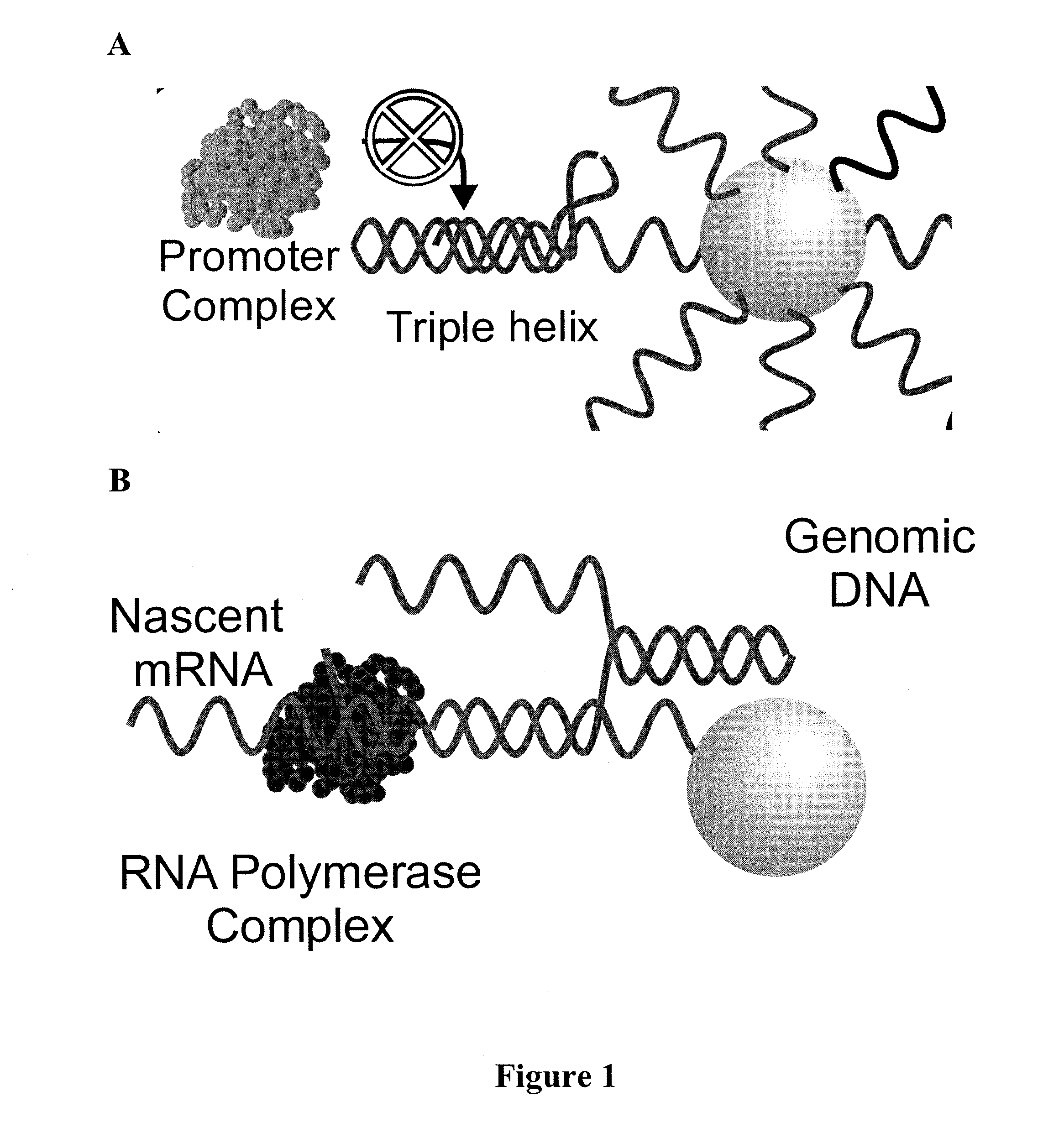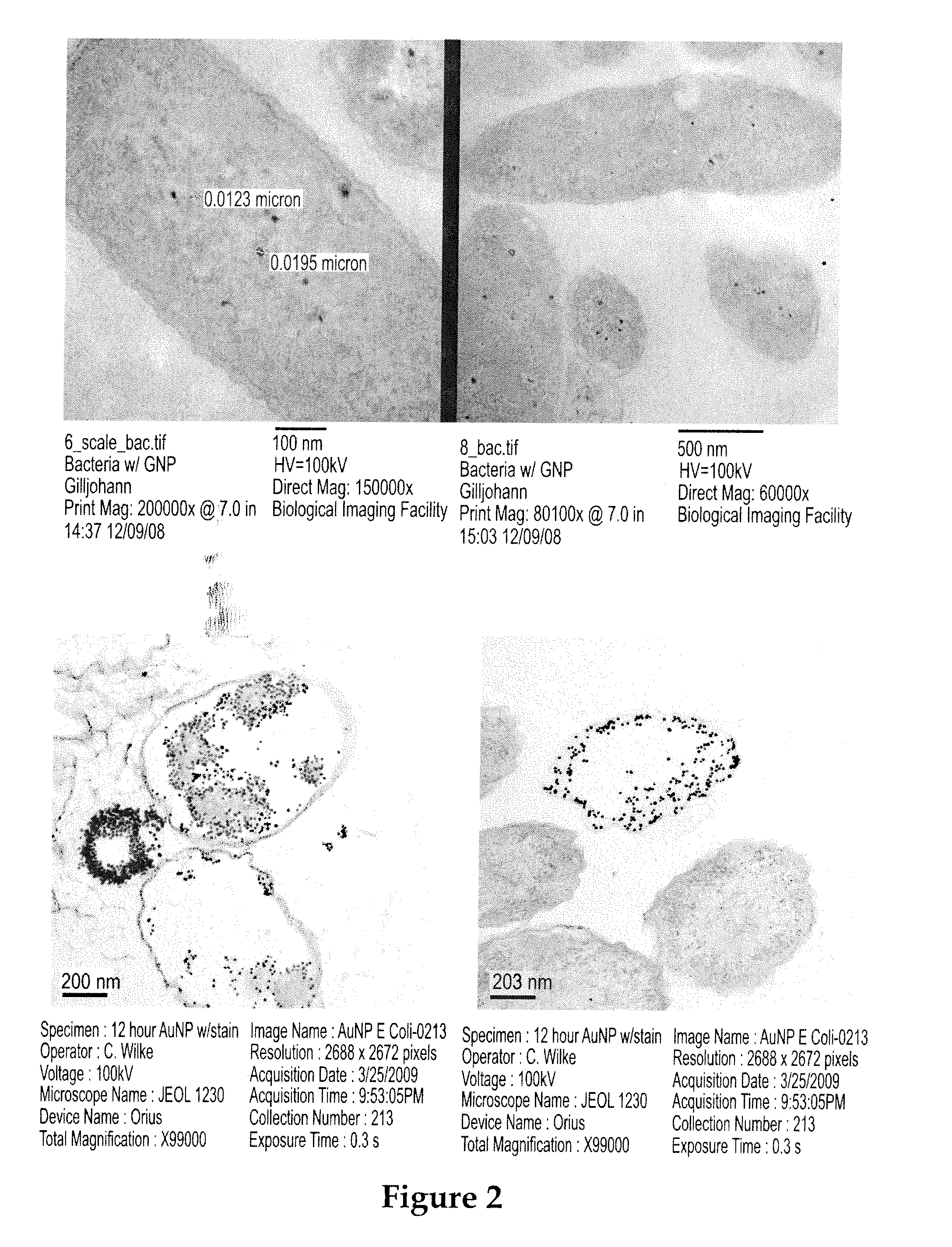Inhibition of Bacterial Protein Production by Polyvalent Oligonucleotide Modified Nanoparticle Conjugates
a technology of oligonucleotide modification and conjugates, which is applied in the direction of antibacterial agents, drug compositions, genetic material ingredients, etc., can solve the problems of limited value of oligonucleotides in bacteria, emergence of “super strains” which resist most medical intervention, and increasing the number of antibiotic treatments
- Summary
- Abstract
- Description
- Claims
- Application Information
AI Technical Summary
Benefits of technology
Problems solved by technology
Method used
Image
Examples
example 1
Preparation of Nanoparticles
[0140]Citrate-stabilized gold nanoparticles (from 1-250 nm) are prepared using published procedures [G. Frens, Nature Physical Science. 1973, 241, 20]. While a 13 and 5 nm size is used in this example, other examples include nanoparticles in size from 1 nm to 500 nm. Briefly, hydrogen tetrachloroaurate is reduced by treatment with citrate in refluxing water. The particle size and dispersity can be confirmed using transmission electron microscopy and uv / vis spectrophotometry. Thiolated oligonucleotides are synthesized using standard solid-phase phosphoramidite methodology [Pon, R. T. Solid-phase supports for oligonucleotide synthesis. Methods in Molecular Biology (Totowa, N.J., United States) (1993), 20 (Protocols for Oligonucleotides and Analogs), 465-496]. The thiol-modified oligonucleotides are next added to 13±1 and 5 nm gold colloids at a concentration of 3 nmol of oligonucleotide per 1 mL of 10 nM colloid and shaken overnight. After 12 hours, sodium ...
example 2
Oligonucleotide Modified Nanoparticle Conjugate Methods
[0141]Oligonucleotide design in this example includes two possible mechanisms of action. First, a sequence was designed using the published plasmid sequence that would preferentially hybridize to the sense strand of the promoter site for the Ampicillin resistance (AmpR) gene β-lactamase. This would sensitize the bacteria to ampicillin by taking advantage of the preferential hybridization of the conjugate (imparted by more favorable binding constant and / or intracellular concentration of the particles) to the promoter sequence of AmpR in the bacterial genome. This would prevent the promoter complex from binding to its target site and prevent transcription of the mRNA transcript (Amp resistance gene), therefore sensitizing the bacteria to ampicillin. The sequences used were 5′-AT TGT CTC ATG AGC GGA TAC ATA TTT GAA AAA AAA AAA A-SH-3′ (SEQ ID NO: 1) and 5′-AT TGT CTC ATG AGC GGA TAC AAA AAA AAA A-SH-3′ (SEQ ID NO: 2).
[0142]A second...
example 3
Oligonucleotide Modified Nanoparticle Conjugates Achieve Transcriptional Knockdown
[0146]An additional strategy was employed to examine transcriptional knockdown in a plasmid derived Luciferase gene. This model was used to demonstrate site-selective gene knock down by differentiating Luciferase knockdown from a separate region on the plasmid encoding Renilla expression. To assay this effect the Dual-Luciferase Reporter Assay System (Promega) was used. The strategy employed for this model was to block formation of a full mRNA transcript of the luciferase gene. This results in diminution of luciferase signal in relation to renilla. The sequence used for this was 5′-CCC GAG CAA CGC AAA CGC AAA AAA AAA AA-SH-3′ (SEQ ID NO: 4). Alternatively, one could use a strategy similar to that used above to block the promoter complex from binding its target site. In this example, 5 nm particles were used. The resulting knockdown after 12 hours was 59% using 300 nM concentration of particles (p value...
PUM
| Property | Measurement | Unit |
|---|---|---|
| Fraction | aaaaa | aaaaa |
| Fraction | aaaaa | aaaaa |
| Volume | aaaaa | aaaaa |
Abstract
Description
Claims
Application Information
 Login to View More
Login to View More - R&D
- Intellectual Property
- Life Sciences
- Materials
- Tech Scout
- Unparalleled Data Quality
- Higher Quality Content
- 60% Fewer Hallucinations
Browse by: Latest US Patents, China's latest patents, Technical Efficacy Thesaurus, Application Domain, Technology Topic, Popular Technical Reports.
© 2025 PatSnap. All rights reserved.Legal|Privacy policy|Modern Slavery Act Transparency Statement|Sitemap|About US| Contact US: help@patsnap.com



